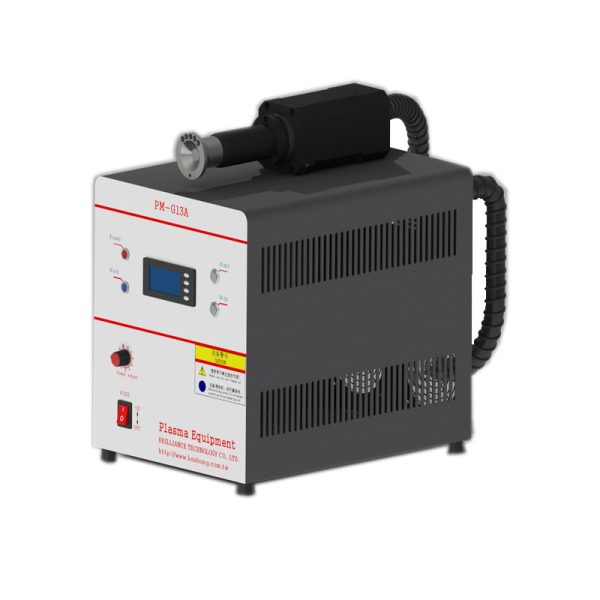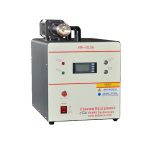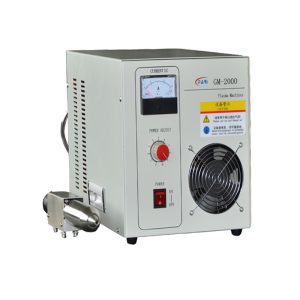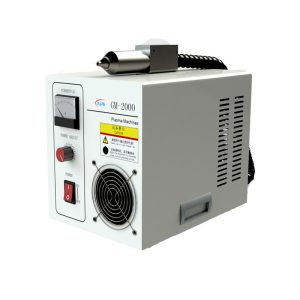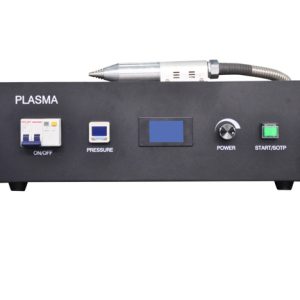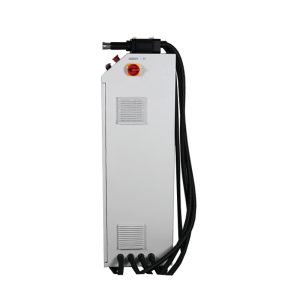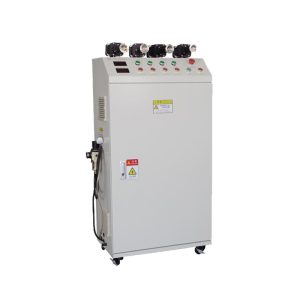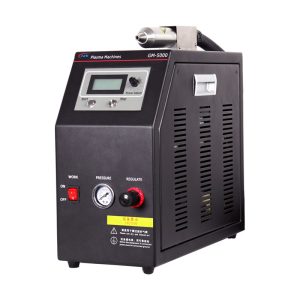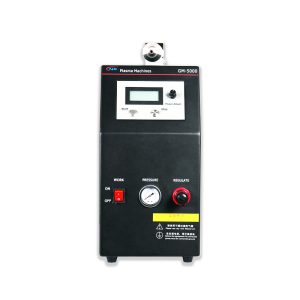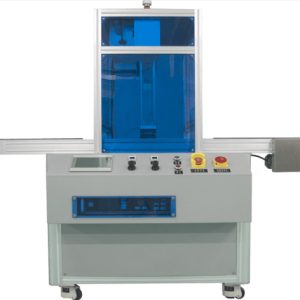Equipamento de limpeza de plasma LRPM-G13A
- Descrição
- Investigação
Descrição
Sheet PVB plasma surface treatment machine for Enhance surface adhesion,Plasma cleaner equipment
Mainly used in material surface cleaning, activation to improve the material surface Yang strength, hydrophilicity, wide application, alta eficiência.
Sheet PVB plasma surface treatment machine for Enhance surface adhesion,Plasma cleaner equipment
| Nome do Produto | Processador de plasma de jato único |
| Modelo do produto | PM-G13A |
| Tensão de entrada | AC220V( ± 10 V) |
| Potência de saída | 1000C |
| Tamanho do equipamento | 400(eu)x280(C)x380(H) |
| Frequência de operação | 18-25kHz |
| Pressão da fonte de ar | 2-2.5 kg |
| peso | 35kg |
| Usar gás | Água.N2(Opcional) |
| Comprimento da conexão | 2.5eu |
Sheet PVB plasma surface treatment machine for Enhance surface adhesion,Plasma cleaner equipment
Características do produto
Single head (nozzle)
Different sizes of nozzles can be selected
Applicable to different products
Processing width
35-40milímetros
55-60milímetros
75-80milímetros
Sheet PVB plasma surface treatment machine for Enhance surface adhesion,Plasma cleaner equipment
Características do produto
Modificação da superfície do produto
A modificação do equipamento de plasma Fangrui pode efetivamente reduzir os fatores de influência do pré-tratamento do material, 95%
Ativação da superfície do produto
A taxa de ativação superficial dos materiais pré-tratados com equipamento de plasma Fangrui é 98%
Limpeza da superfície do produto
A modificação do equipamento de plasma Fangrui pode efetivamente reduzir os fatores de influência do pré-tratamento do material, 95%
Colagem da superfície do produto
A adesão da superfície do material foi melhorada por 92% usando equipamento de plasma Fangrui
Sheet PVB plasma surface treatment machine for Enhance surface adhesion,Plasma cleaner equipment
Suitable for a variety of industries
Biomedical industry
3 C Digital industry
Optical photoelectric industry
Printing and packaging industry
Automobile manufacturing industry
Indústria de eletrodomésticos
Plastic and rubber industry
Indústria de semicondutores
Textile printing and dyeing industry
Semiconductor packaging industry
Mobile phone manufacturing industry
New energy industry
FBC/PCB field
Sheet PVB plasma surface treatment machine for Enhance surface adhesion,Plasma cleaner equipment
Plasma application field
Indústria de embalagens
Professional improve coated paper glazed paper, polished, cartão de ouro e prata, papel banhado em alumínio, ultravioleta, OPP, PP, PE and other color boxes, caixa de cor superfície colar solidez da caixa;
Indústria eletrônica
Electronic components processing plasma pretreatment, Limpeza de PCB, removal of static electricity, Suporte LED, Limpeza e colagem de superfícies IC.
Indústria automobilística
Plasma surface pretreatment process for car lamp bonding, pedal de freio, wiper, capuz, instrumento, bumper, etc..
Printing and coding industry
Pré-tratamento de plasma antes da tampografia, serigrafia e codificação a jato na superfície do plástico, metal, vidro e outros materiais compósitos para melhorar a adesão da superfície do material à tinta
Vidro de precisão
All kinds of precision glass, spraying, impressão, bonding before treatment. LCD panel 1C before binding terminal surface cleaning, improve the glass surface cleanliness and hydrophilicity:
Indústria plástica
Plástico, borracha, gold Bali before bonding pretreatment, melhorar a adesão da superfície; · Pretreat the plastic shell of mobile phones, computadores, toys and so on before painting to improve the surface adhesion
Sheet PVB plasma surface treatment machine for Enhance surface adhesion,Plasma cleaner equipment
Introduction to low temperature plasma surface treatment technology
The energy of particles in low-temperature plasma is generally about several to ten electron volts, which is larger than the bond energy of polymer materials (several to ten volts), and can completely break the chemical bonds of organic macromolecules and form new bonds, but it is far lower than high-energy radioactive rays, which only involves the surface of the material and does not affect the performance of the matrix. In low-temperature plasma in non-thermodynamic equilibrium state, electrons have high energy, which can break the chemical bonds of molecules on the surface of materials and improve the chemical reactivity of particles (greater than that of hot plasma), while the temperature of neutral particles is close to room temperature. These advantages provide suitable conditions for surface modification of heat-sensitive polymer polymers. Through low temperature plasma surface treatment, a variety of physical and chemical changes occur on the surface of the material, or produce etching and roughness, or form a dense cross-linked layer, or introduce oxygen polar groups, so that the hydrophilicity, cohesiveness, chromability, biocompatibility and electrical properties are improved. When the surface of the material is treated under the appropriate technological conditions, the surface morphology of the material is changed significantly. A variety of oxygen-containing groups are introduced to make the surface change from non-polar and difficult to stick to a certain polarity, easy to stick and hydrophilic, which is conducive to bonding, thin coating and printing. No entanto, because corona can only be carried out between two adjacent parallel electrodes, and the distance should not be too large, the corona processing method is not suitable for dealing with the surface polarization problem of three-dimensional objects. If the flame process is used, the weakness is that all polymers are flammable and have a low melting point. When organic materials are exposed to high temperature flame, they will deform, discolor, rough surface, burn and emit toxic gases due to high temperature treatment. And the processing technology is difficult to master. The low temperature plasma flow process is the best method to modify the surface of 3D object. The principle is shown in the figure. By applying AC high frequency and high voltage at both ends of the electrode, the air between the two electrodes generates gas glow discharge and forms an isoionization zone. The equiionization reaches the surface of the treated object under the blowing of the air flow to achieve the purpose of modifying the 3D surface.









